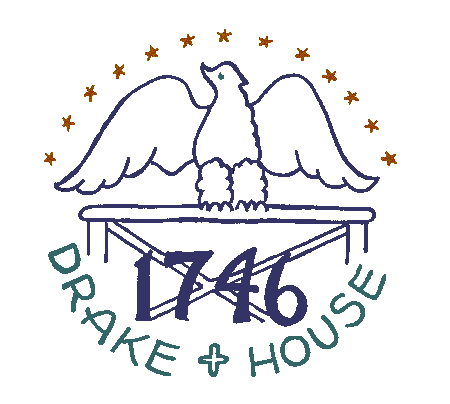 |
|||||||||||||||||
|
|
|||||||||||||||||
 |
||||
ON PERMANENT DISPLAY at the Drake House Museum are three Colonial era rooms including a kitchen, Queen Anne dining room and the Washington bedroom. The parlor and the Harberger Library are interpreted as period Victorian rooms. The Drake House collection also includes costumes, historical books, photos and prints, paintings and a wide array of community memorabilia. Listed below are just a few of the fascinating objects on display at our site. Something to Keep You Warm, The Tree of Life Quilt IN THE WASHINGTON BEDROOM
visitors will find the most famous of the Drake House quilts, the Tree of Life. This quilt is associated with the daughter of John Hart, a representative of the Continental Congress, a signer of the
Declaration of Independence and resident of Jersey City. The tree of life pattern is derived from Indian textiles called palampores, which indicates that even during America's early history, the colonists were
influenced by styles from around the world. Although colonial quilts were primarily made to ward off the cold on a cold winter's night, these homespun gems filled several important roles in colonial communities. Among
families, many quilts were made as wedding presents for newlyweds. A number of quilts contained family histories including names, birth, marriage and death dates. In rural communities, quilting bees provided
an outlet for socializing. One quilting bee which took place in Narragansett, Rhode Island in 1752 lasted ten days! In the annals of East Jersey history, it is written that Martha Washington took part in
quilting bees with the ladies of Morristown while General Washington was stationed at headquarters there. From an aesthetic view, quilting provided an important outlet for artistic creativity. In Freedom's Footsteps, Colonial Documents ONE OF THE MOST INTERESTING DOCUMENTS in Drake House is the last will and testament of Isaac Drake, its builder. Upon his death in 1756, Drake manumitted his female slave Cate and provided for the freedom of his three male slaves Tom, Tone and Cesar ten years later. This document is important because it records slavery found in the North and among the early families of Plainfield and East Jersey. It also provides evidence of Americans slowly changing their attitudes towards the "peculiar institution," and raises as many questions as it answers regarding slavery and the history of colonial African-Americans. Was Isaac Drake influenced by local Quakers in his decision to manumit his slaves? By moral belief or religious persuasion? Why did he set Cate free and not the male slaves? What happened to Cate, Tom and Tone after they left Drake House? Why did Cesar, later a free man continue to reside with the Drake Family? Did Tom, Tone or Cate take the last name Drake? In the Heat of Battle, The Death of General Sedgewick IN THE HARBERGER LIBRARY,
visitors are drawn into the heat of a civil war battle with the huge oil painting The Death of General Sedgewick. Created by Plainfield resident and Civil War veteran Julian Scott, the work recounts the story of
union troops led by General Sedgewick near the courthouse in Spottsylvania, Virginia in May of 1864. In the depths of sniper fire, it is written that Sedgewick chided his troops by saying "What, What! Men,
dodging this way for single bullets? What will you do when they open fire along the whole line? I am ashamed of you. They couldn't hit an elephant at this distance?" No sooner than the general
made these remarks he was critically wounded in a hail of bullets. Scott who largely painted military subjects served as a drummer boy and is believed to be the model of the drummer boy looking at the dying officer in
the painting. From 1993 to 1994, Scott's work traveled with the Smithsonian exhibition "Picturing History: American Painting 1770-1930." A Time of Leisure, A Time of Wealth: VISITORS TO THE DRAKE HOUSE PARLOR will find a variety of Victorian era treasures including a horse-hair empire style sofa, a 7-legged Creiger piano, crazy quilts, and a stuffed heath hen which seems to fascinate most young visitors. This land bound bird was once known as a poor man's dinner. Now extinct, the rarity is largely seen in enclosed glass cases like the one at Drake Houses and in pages of natural history books. |
||||
Contents of any advertisements associated with this page are NOT endorsed in any way by |
||||